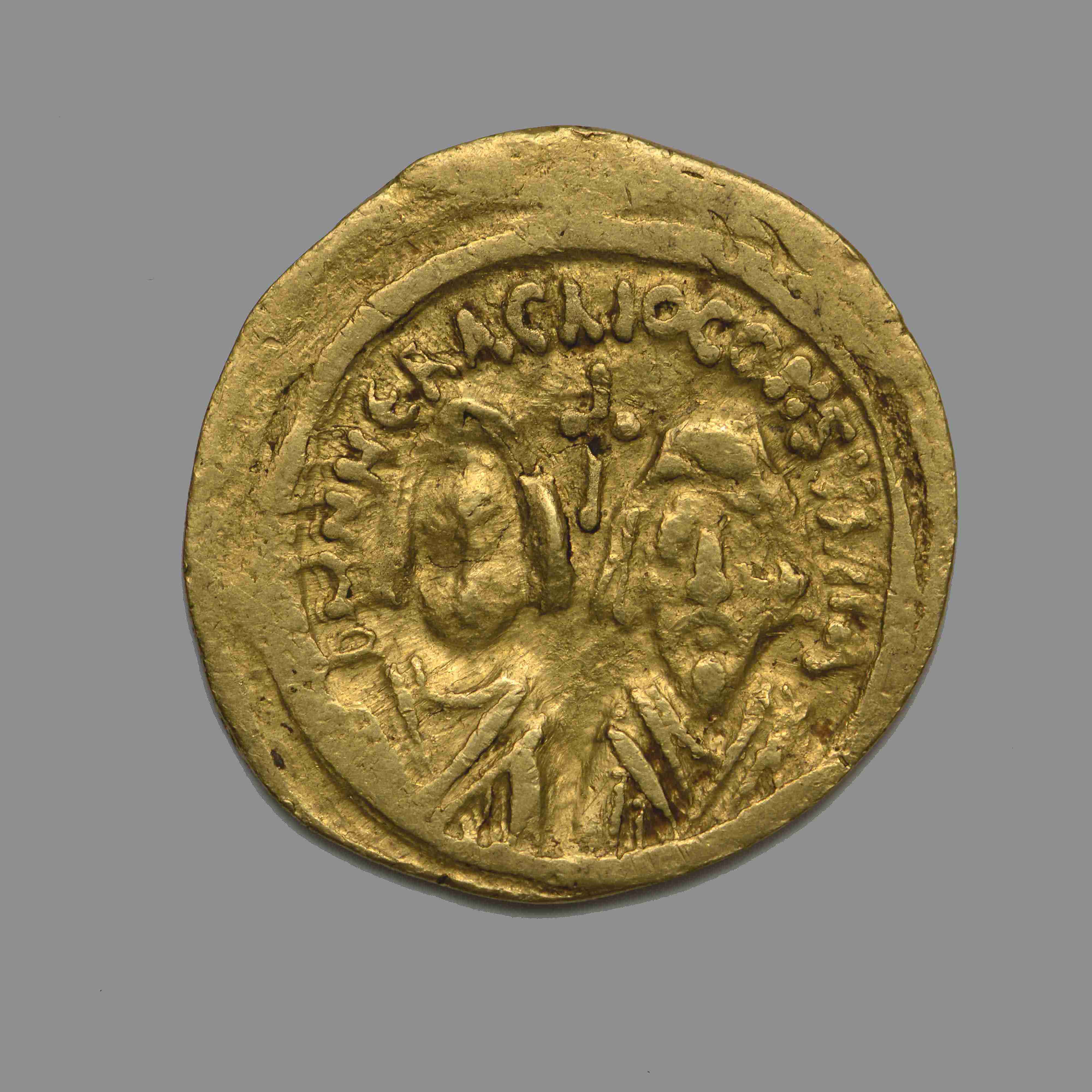Herakleios, Gold, Solidus, Carthage, circa 607/608-circa 610
Obverse
Frontal view of two bare-headed busts wearing consular robes. Cross between heads.
DMNHERCIOCONSVII
Obverse
Frontal view of two bare-headed busts wearing consular robes. Cross between heads.
DMNHERCIOCONSVII
Reverse
Cross potent on base and three steps.
VICTORI-CONSΛBI
Exergue
CONOB
| Accession number | BZC.1977.4 |
|---|---|
| Catalogue ID | as DOC 2.1:213, no. (12) |
| Ruler | Herakleios |
| Associated Authority | Herakleios the Elder |
| Metal | Gold |
| Denomination | Solidus |
| Mint | Carthage |
| Date | circa 607/608 – circa 610 |
| Diameter | 19.0 mm |
| Weight | 4.39 g |
| Relation of Dies | 6:00 |
| Shape | Flat |
| Undertype | Solidus of unidentified ruler. |
Acquisition History
From A. H. Baldwin’s Selection, 19 April 1977

Commentary
This is a solidus of the good style, Class III. Philip Grierson believes this coin was restruck on a solidus of an unidentified ruler. There is a trace of a crown in the right field of the coin’s reverse.
Because of their large diameter, the solidi of this fabric were first assigned to the mint of Alexandria by Grierson. On the basis of the continuation in Carthage under Herakleios of two parallel series of solidi (one thick and smaller, the other larger and thinner) Hahn (MIBEC, p. 68) suggests that the present type was struck in Carthage to facilitate their circulation in the rest of the empire.
MIBEC 203, no. 2 (assigned to Carthage)
P. Grierson, “The Consular Coinage of ‘Heraclius’ and the Revolt against Phocas of 608–610.”